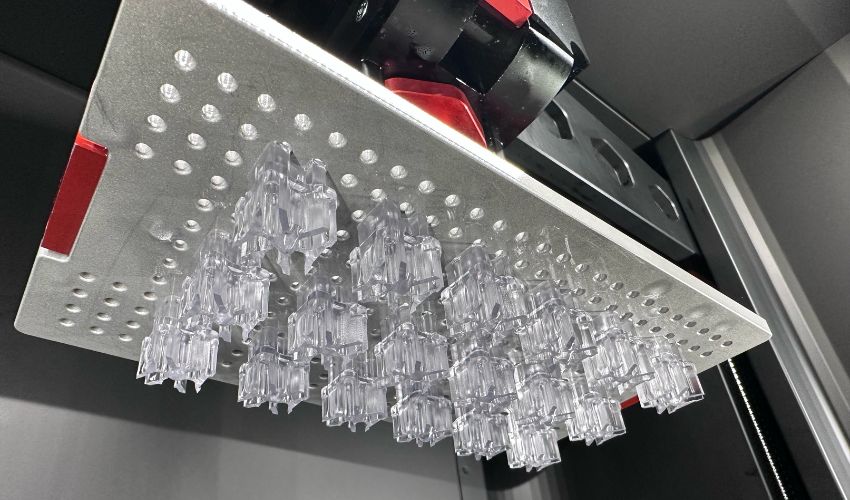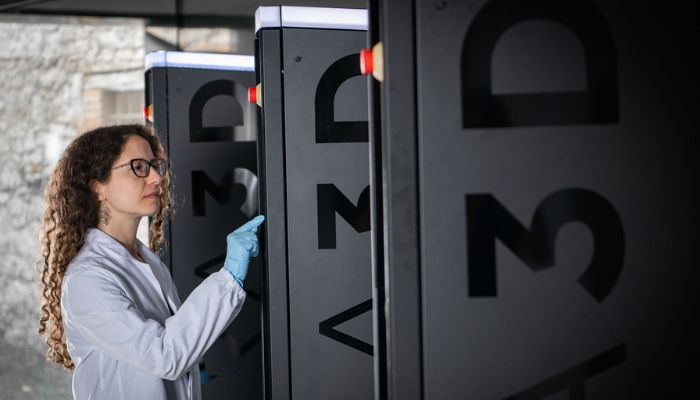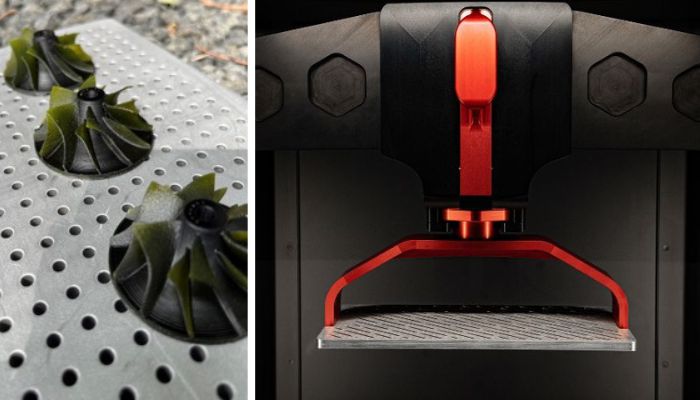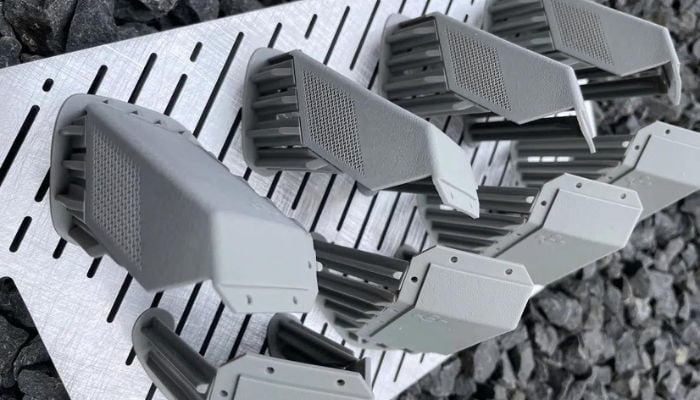The Lumia X1 Is Overcoming Limitations in Resin 3D Printing With an Innovative Hybrid Process

Since stereolithography, the first additive manufacturing technology, was invented in the early 80s, there has always been a place for resin 3D printing in the sector. Currently, a number of different variations exist but the two most common remain DLP and SLA. However, it can be difficult for users to know which one to choose. While SLA allows for incredibly detailed and precise parts, it is slow due to the usage of a laser to cure point by point. Meanwhile DLP, which uses a projector or light generator, is fast, but the end parts do not have the same accuracy. But what if these two technologies could be combined to eliminate the limitations and allow users to just reap the benefits? Well, thanks to Axtra3D, this has become a reality. In the Lumia X1 3D printer the company has integrated a new 3D printing process named Hybrid PhotoSynthesis (HPS), which combines both DLP and SLA allowing for more effective and larger-scale resin 3D printing.
It is not the first time that we have told you about Axtra3D. The startup was founded in 2021 by Gianni Zitelli and Praveen Tummala and is based in both Charlotte, North Carolina and Vicenza, Italy. With their innovative Hybrid PhotoSynthesis (HPS) and TruLayer Technology, Axtra3D hopes to open a new realm of possibilities for the 3D printing industry, promising a large build area, high-resolution, fast speeds, impressive surface quality and continuous printing (features that up until now had often been mutually exclusive). Not only that, but in line with its values, the company is also committed to keeping the Lumia X1 3D printer completely open from a parameter access and material perspective, giving greater freedom to users. Additionally, it plans to disrupt the status quo in field service with 24/7 support request response within 60 minutes and the use of AR technology to resolve a high percentage of issues remotely and quickly. But what exactly can you expect from the company’s first solution, the Lumia X1?

The Lumia X1 from Axtra3D combines SLA and DLP in an innovative, hybrid process
Combining Speed and Accuracy in One Process
Of course, one of the main benefits of the Lumia X1 3D printer is undoubtedly the 3D printing technology itself. The difficulties in choosing a resin technology due to the many tradeoffs existing between them, precision versus speed notably, are well known. However, with HPS, this issue is a thing of the past. The light engine technology combines both DLP and SLA in one co-axial system.
The way the technology works is that it integrates both an image generator and a laser. These two light sources are able to work synchronously on the same wavelength at the same image plane planarity. The image generator cures the bulk of the cross-section, or “Flash Hatching.” This allows for the speed of DLP. At the same time, the laser works to create the border contours for better surface quality and accuracy at a 50-micron resolution. By leveraging both, Axtra3D has managed to, in their own words, “unlock unparalleled print speed, quality and accuracy.” Moreover, it is possible to scale the technology for large platforms as well, allowing for a larger build volume which is often a rarity with many resin 3D printing processes.
Of course, HPS is not the only innovative technology in the Lumia X1. The printer also integrates another feature that it claims will help revolutionize resin 3D printing, TruLayer technology. It should come as no surprise that a key drawback in all resin photopolymer processes is that the layers can stick on the plate, causing delays. TruLayer has been designed to overcome this.

Impellers (left) made on the Lumia X1 whose build plate is shown on the right
Essentially, in the Lumia X1, Axtra3D has incorporated a trio of sensors onto the glass plate beneath the printer’s membrane, thus eradicating inter-delays while amplifying the printing speed twofold. But how? Well, the innovation works by ensuring the swift detachment of the print layer from the vat membrane, removing constraints on size and bulk of the cross-sections. As a result, the vat membrane has an enduring quality and bolstered longevity all with the capability to print with even highly viscous resins.
Paul Spolianksy, CRO of Axtra3D, further explains “Since implementing our TruLayer Technology, we’ve noticed a significant performance advantage over our competitors. We’re excited to provide our customers with top-notch resolution, unmatched accuracy, and fast print speeds that not only enhance production applications but also make them economically viable.”
Additional Features of the Lumia X1
Beyond the integration of TruLayer technology and Hybrid PhotoSynthesis in the Lumia X1 3D printer, the machine has a number of other characteristics that make it attractive to users. Built to industrial standards, the solution is expected to have a 10+ year working life. At the same time, it offers a number of safety features including ventilation, a magnetic interlock system, a UV shielded viewing window and of course an emergency stop button. It also boasts features like the Intelli-Cartridge, a double Z-Axis, integrated 4k chamber camera, large graphic user interface and both an online and offline mode.

Parts made with the Lumia X1 are able to be made quickly while still being accurate
The Intelli-Cartridge in particular has been pointed to by the company as an exciting innovation. It aims to simplify and automate the 3D printing process by actively managing the resin in the printer by dispensing material in the vat and collecting excess material as well as stirring, heating and filtering. Furthermore, thanks to the Intelli-Cartridge, the amount of resin that can be used for printing not only increases to a total of 8 liters but eliminates the need for manual top-ups.
Beyond this, it also minimizes waste by taking out extra resin, filtering it and then returning it to the cartridge. With automatic mixing as well, the Intelli-Cartridge ensures consistent levels of material in each layer while infrared heaters control the temperature. All together, the feature plays an important role in improving the efficiency and convenience of high-volume printing, key factors in general that can be seen in the Lumia X1 3D printer overall. If you would like to learn more about the Axtra3D and the Lumia X1 3D printer, you can go to Axtra3D’s website HERE or their LinkedIn HERE.
What do you think of the Lumia X1 3D printer from Axtra3D? Let us know in a comment below or on our LinkedIn, Facebook, and Twitter pages! Don’t forget to sign up for our free weekly Newsletter here, the latest 3D printing news straight to your inbox! You can also find all our videos on our YouTube channel.
*All Photo Credits: Axtra3D






